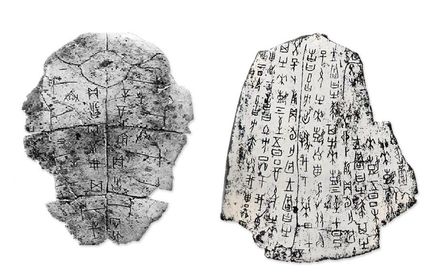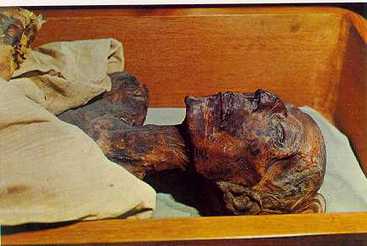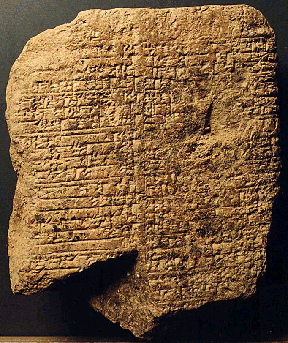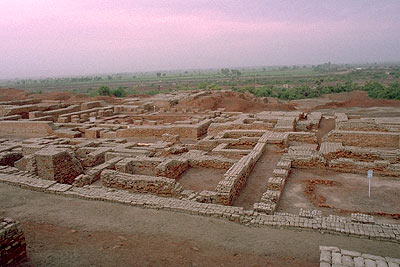Systems of Rule in Early Civilizations
Shang Dynasty
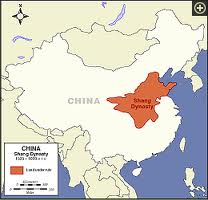
Map of the Shang Dynasty
The Shang Dynasty, roughly from 1600 to 1050 BCE, took place in the middle of China’s bronze age and was the first Chinese Dynasty to be known to leave behind written records and archeological evidence of its existence. Much of what is known about the Shang Dynasty’s system of rule is because of oracle bones found with inscriptions confirming names of kings and describing the style of government used during this time. The dynasty’s first capital is said to have been established in a town called Shang by Cheng Tang. Archeological evidence suggest that although the capital was moved many more times, Shang continued to remain the ancestral capital of the dynasty. This is where the Shang kings kept their most prized possessions such as sacred ancestral temples, tablets and regalia. The Shang capital never moved although the political capitals, where the kings lived and ruled from, often moved. In the Shang dynasty there was a king who had supreme power over everything, including religion and the life and work of the peasants. However, because the Shang Dynasty was so large and the king could not rule over every separate part of the dynasty, he appointed nobles (who were usually the king’s relatives) to rule the other parts. The Shang political system was organized into a hierarchy involving different levels of ranks where the king and other nobles were at the top of the social spectrum, while peasants, who had very little power, were at the bottom of the social spectrum. The people of the Shang Dynasty had to give a portion of their harvest to the king which shows how people low on the social hierarchy had very little power. The Shang dynasty also had job specialization. One job that had a profound effect on the Shang government’s ability to rule was writing because it allowed the government to communicate on a large scale to the state’s many territories. Communication was key for the Shang Dynasty since it was constantly at war because the king wanted prisoners (for servants) and also new territory. However, even with writing as a great source of communication between the different territories of the Shang Dynasty, it finally came to an end in 1050 BCE when the Zhou conquerors took over saying that the Shang king was evil and should not rule anymore.
Egyptian Civilization
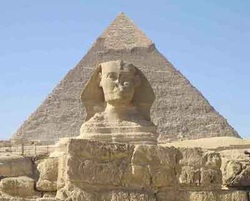
Egyptian Pyramid
The Egyptian people (circa 2000-1000 BCE) were ruled by a Pharaoh who was the monarch of the country and had complete control over the land and its resources. The pharaoh also had command over the military, the government and the legal system in which he enacted laws and maintained law and order (this was a concept the ancient Egyptians referred to as Ma’at). But the pharaoh did not lead completely alone; he relied on many officials to manage his affairs. For example, in charge of the administration was his second in command, the vizier, who acted as the king's representative and coordinated land surveys, the treasury, building projects, the legal system and the archives. Along with the pharaoh and the vizier, each administrative region (the country was divided into as many as 42) was governed by a nomarch who was accountable to the vizier. Egypt had a strong social hierarchy where the pharaohs were at the top. Because these Egyptian kings could put members of family in charge of administration, much of the pharaoh’s family was in power. Pharaohs also passed on their power to their sons and this created a large separation between the kings and their family and the common people. However, Egyptians viewed the Pharaoh as being born by the Gods and immaculately conceived so that anything the Pharaoh said was a God-given order and must be followed. This allowed for the Pharaoh to create a system of government where the high social class benefitted without the low social class protesting.
Mesopotamia
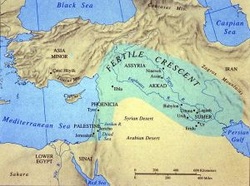
Map of Mesopotamia
The Mesopotamians are credited with having invented the centralized state and the developed kingship. Each king passed down their leadership so that power continued to stay in the family. Mesopotamia’s cities are where much of the politics occurred. As Mesopotamia began to grow, many of its city-states converged to become kingdoms. This brought people together and created a more centralized government. Mesopotamians are also believed to have started government bureaucracies because instead of farmers paying taxes, they paid tithes. Scribes and palace officials handled daily government affairs including the tithes made by these farmers. One thing that sets Mesopotamia apart from Egypt and the Shang Dynasty is that King Hammurabi created a set of rules circa 1700 BCE called The Laws of Hammurabi. These laws created rules that the people had to follow or face punishment for disobeying. He had the laws inscribed on stone and then placed in temples throughout cities. Mesopotamians believed the laws came from the gods so they must be followed. And although Hammurabi’s laws were supposed to protect the weak, people with high social statues received more mild punishments if they were to break a law where a person with a low social status suffered great consequences for disobeying.
Indus River Valley- Harappa and Mohenjo-Daro
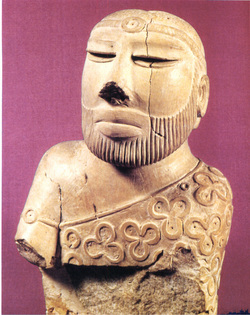
Statue of a Priest in Mohenjo-Daro
The Indus River Valley (circa 3000-1500 BCE) was home to two major civilizations: The Harappa civilization and the Mohenjo-Daro civilization. Very little is known about these two cities and their systems of rule because their writing is still undeciphered. What is known about these two civilizations and their systems of rule is that they were remarkably similar although they were hundreds of miles apart. Both Harappa and Mohenjo-Daro were built in a grid pattern that was divided into twelve more grids. The grid in both cities suggests orderly government and planning. Both cities also had 3 classes: the highest class was dominated by priests and merchants, the middle class held the less-successful merchants and artisans, while the lowest class consisted of laborers including farmers. The priests were the speakers for the Gods and used this “power” as a way to maintain control over the people. Both Harappa and Mohenjo-Daro consisted of administration buildings, markets, storage areas, workshops, houses and temples. All of these buildings show job specialization because as farming techniques became better, a food surplus was created, requiring fewer farmers and thus allowing people to pursue other careers such as merchants, scribes, priests and laborers.
